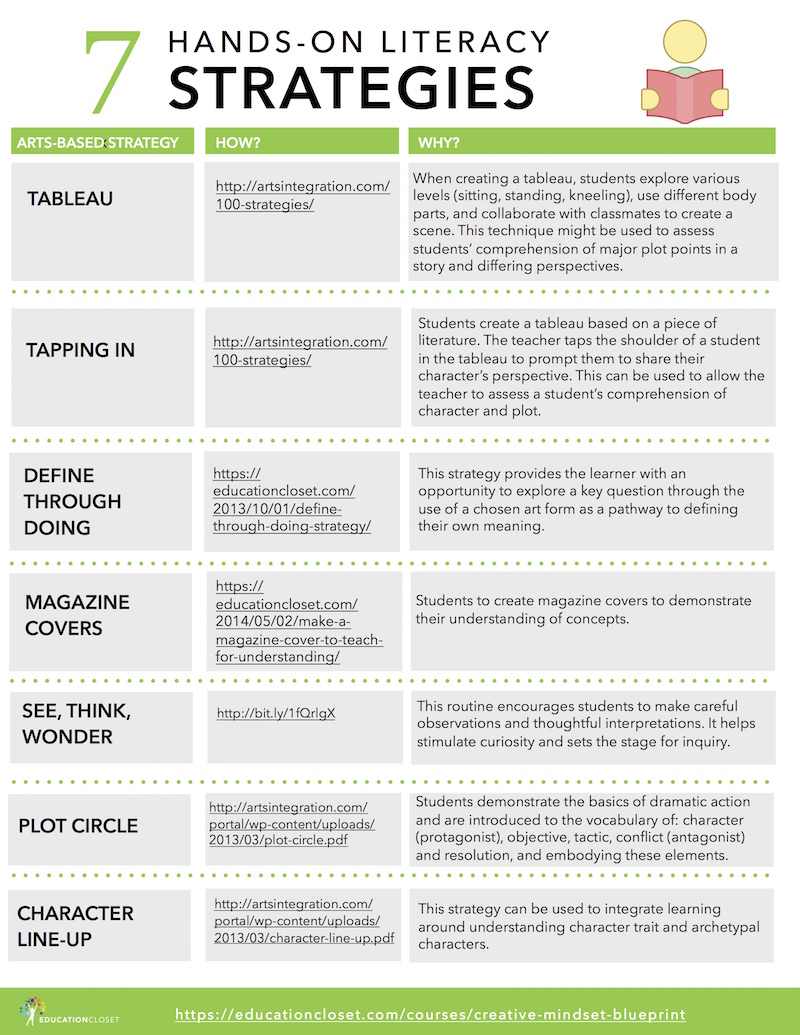Show Your Smarts!: Strategies for Hands-On Literacy
2 Min Read • Literacy
I was recently engaged in a conversation with colleagues strategies for hands-on literacy and engaging for students. Our very own problem-based learning!
The Problem: Students are highly engaged in STEAM content areas through a variety of hands-on, inquiry based experiences, and much of the students’ hands-on literacy experience is writing based. Does this really reflect students’ individual learning styles? How can we give students more possibilities for creative expression and for demonstrating understanding? How can we make hands-on literacy more “hands-on”?
My Proposed Solution: Arts integration strategies!
Why?: A 3rd grade teacher administered a learning styles quiz to her class, aimed at helping each student identify their own personal learning style based on Gardner’s multiple intelligences. (How We Are Smart by W. Nikola-Lisa s a great kid-friendly resource- a biography highlighting how twelve famous people embody the eight intelligences). Her students showed a variety of strengths and learning styles, with many falling into the kinesthetic, musical, and visual categories. Are we giving children in these categories a chance to show their smarts? Arts integration strategies provide alternatives to the traditional “pen-and-paper” approach by giving students an engagement experience, allowing students to express themselves through a variety of learning styles, accessing students’ various areas of intelligence, and fostering those 21st century learning skills of creativity, collaboration, critical-thinking, and communication.
How?: I compiled a chart of general arts integration strategies (some from my friends at Education Closet, some from other great resources) that could be easily used in the hands-on literacy classroom to reinforce concepts and demonstrate understanding, while giving students a chance at hands-on literacy.
DOWNLOAD THIS HANDOUT HERE
Tableau: Students create a frozen picture using their bodies. When creating a tableau, students explore various levels (sitting, standing, kneeling), use different body parts, and collaborate with classmates to create a scene. This technique might be used to assess students’ comprehension of major plot points in a story and differing perspectives.
Tapping In: Students create a tableau based on a piece of literature. The teacher taps the shoulder of a student in the tableau to prompt them to share their character’s perspective. This can be used to allow the teacher to assess a student’s comprehension of character and plot.
Define Through Doing: This strategy provides the learner with an opportunity to explore a key question through the use of a chosen artform as a pathway to defining their own meaning.
Magazine Covers: Students to create magazine covers to demonstrate their understanding of concepts.
See, Think, Wonder: This routine encourages students to make careful observations and thoughtful interpretations. It helps stimulate curiosity and sets the stage for inquiry.




